
Centre of Jaina Studies Newsletter: SOAS - University of London
South Asia is dotted with numerous funerary cenotaphs for Jaina mendicants. These memorials are often relic stūpas. They generally mark the sites of cremation, rather than death, of renowned historical individuals, often monks or nuns who died a special death through self-starvation, or sallekhanā. Sites of cremation of Jaina saints are perceived as sacred, because they are believed to be visited by powerful deities, including the reborn mendicants themselves, which can be propitiated for help.
Yet funerary shrines have also been erected for the śalākā-puruṣas, the legendary exemplary individuals ('men of mark') of Jaina universal history,[1] in the never ending effort of transforming the natural geographies of South Asia into Jaina religious landscapes. Funerary cenotaphs for legendary figures have a purely narrative basis. They are commemorative shrines only, like temples, but not stūpas, containing relics. Their iconography, nonetheless, deliberately intimates the existence of a physical connection between the remembered individual and the locations of the memorials, especially through the use of footprint-images (caraṇa-pādukā).

Figure 1 Samādhi-mandira for Balabhadra
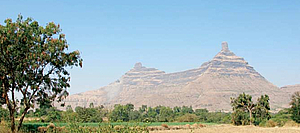
Figure 2 Mt. Māṅgī-Tuṅgī Gālanā hills of the Selbaṛī range in northern Mahārāṣṭṛa.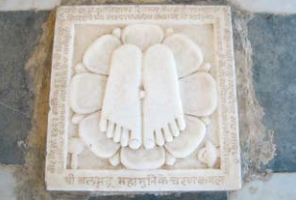
Figure 3 Footprint image of the Balabhadra samādhi-mandira on Mt. Māṅgī-Tuṅgī.
One example of such a mock funerary cenotaph is the samādhi-mandira for the legendary Muni Balabhadra (Baladeva), also known as Balarāma or Padma, the elder brother of the Jaina version of Kṛṣṇa (Vāsudeva), which has been created on the top of Mt. Māṅgī-Tuṅgī (older name: Tuṅgīgiri) Gālanā hills of the Selbaṛī range in northern Mahārāṣṭṛa. (Figure 1) This 'Divided Mountain Peak'[2], featuring two pinnacles connected with a narrow ridge, on which two samādhis were placed,[3] is held sacred by the Digambaras as a siddha-kṣetra, a place where exceptional souls find liberation after physical death through the practice of sallekhanā. (Figure 2) Most of the named Jaina monks who are said in Digambara texts such as Nirvāṇa-kāṇḍa, Bhakti-kāṇḍa and Padmapurāṇa to have died and found salvation on this mountain are jainised gods of Hindu mythology: Rām, Hanumān, Sugrīva, Gavaya, Gavākṣa, Nīla, Mahānīla, etc. As indicated by the samādhi, the main character associated with MāṅgīTuṅgī is Rāma (Balabhadra, Balarāma, Padma). Jaina universal histories mention that after the cremation of Kṛṣṇa, Balarāma became a Jaina monk who extensively fasted on Mt. Tuṅgī, died and went to heaven. Yet, there is no report on his cremation. According to the Digambara purāṇas, it was Kṛṣṇa who was cremated on Mt. Tuṅgī. But he was then reborn in hell. The site of his funeral is nevertheless marked on the hill by a water tank named Kṛṣṇa-Kuṇḍa. Balabhadra Jain (1987: 208f.) noted that despite the fact that Guṇabhadra's Uttarapurāṇa 72.182184 mentions only Nemi's prophecy of Balabhadra's future rebirth as a Jina, later Digambara poets, such as Abhayacandra, Jñānasāgara, Śrutasāgara, Udayakīrti, etc., describe Māṅgī-Tuṅgī as his place of liberation.
The inscription around the caraṇa-pādukās inside Balabhadra's mock funerary pavilion (chatarī) is careful not to contradict the older textual accounts. (Figure 3) It records the re-consecration of the shrine on the 15.11.1996 (Vīra Nirvāṇa Saṃvat 2523 Kārttika Śukla [4]), in the presence of the saṅghas of Gaṇinī Jñānamatī and Āryikā Śreyāṃsamatī of the tradition of the Digambara ācāryas Kundakunda and 'Cāritra Cakravartī' Śāntisāgara, after renovation of the 'lotus-feet' of the great 'Digambara muni' Balabhadra, 'who had performed extreme austerities on Māṅgī-Tuṅgī'. His death and cremation are not stated. At least one earlier 'renovation' of the funerary pavilion of Balabhadra in the year 1935 (VN 2462), which points to pre-existing commemorative shrines at this location, is recorded in a set of inscriptions, listing the names of the financial sponsors, in one of the caves at the base of the first of the two mountain peaks, the now so-called 'Māṅgī' pinnacle. An unattributed 'archaeological assessment', displayed on site at two different locations, in Hindī and in English, describes the shrine as 'dedicated to Padmaprabhu' that is, Balabhadra (Padma), not the 6th tīrthaṅkara Padmaprabha. Since the caraṇa-pādukās of Balabhadra are not mentioned by the archaeological assessment, whose source is not given, it must have been formulated before the renovation of 1998 if not 1935. The present, already damaged chatarī has been constructed on a platform that is much wider and which, as an old photo in G.N. Jain (n.d.) shows, once supported the now entirely destroyed shrine of Rāmacandra as well.
However, another, much more intriguing, tangible link between the Balabhadra legend and Māṅgī-Tuṅgī is evident on the mountain: a rare and possibly unique image of a naked Digambara Jaina monk, Balabhadra, turning his back to his devotees. (Figure 4) It may be the only image of its kind. It is connected with a few other representations on site referring to the Balabhadra legend, although Tīrthaṅkara Neminātha is conspicuously absent amongst the Jina statues on the mountain. Under the pinnacle of the western peak, today known as 'Māṅgī', there are altogether seven caves and cave-like apertures, connected by a circumambulatory path, featuring reliefimages and pādukās of four tīrthaṅkaras, two legendary monks cum gods, anonymous Digambara munis, protector gods and goddesses, and anonymous worshippers. The sequence of renovated, still actively used shrines, four of which are called 'temples' (mandira), is as follows:4 (1) three anonymous Digambara munis, (2) the legendary Ācārya Kṛtāntavakra,[5] (3) Mahāvīra, (4) the legendary Muni Balabhadra (next to two unidentified jinas, Nandiśvara, as well as pādukās of Ācārya Bhadrabāhu), (5) Ādinātha, (6) Śāntinātha, (7) Pārśvanātha (with Yakṣī Siddhāyikā, etc., and a representation of Kṣetrapāla outside). The largest cave with the presumed oldest images is dedicated to Ādinātha, a footprint-image of whom has also been placed at the apex of the path around the western peak. The three active shrines under the pinnacle of the more remote eastern peak, today known as 'Tuṅgī', are less elaborate and significant. They are dedicated to: (1) Rāmacandra (Padma), (2) Candraprabhu, (3) Pañcabālāyati Bhagavāna (Vāsupūjya, Mallinātha, Neminātha, Pārśvanātha, Mahāvīra). The dates of the images cannot be firmly stated. According to the posters on site on 'The Archaeological Significance of the Digambar Jain Remains at Māṅgī-Tuṅgī Hills', the surviving images of the main shrines cannot be older than the 10th to 11th centuries, though most are said to have been carved out of solid rock between the 12th and 18th centuries. The image of Yakṣī Siddhāyikā in the Pārśvanātha cave is apparently the only datable relief. It has been placed in the 12th century C.E. on the basis of counterparts at Ellora.[6]
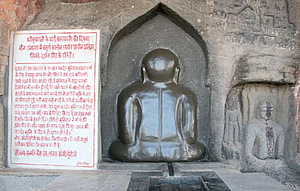
Figure 4 Restored relief image of Balabhadra with his back turned. On the right is a relief of a woman and a child.
The name of cave no. 4 'Śrī Māṅgī-Tuṅgī Digambara Jaina Guphā Śrī Balabhadra Svāmī jī (Śrī Digambara Muni Balabhadra Svāmī)' underlines the exclusive claim of present-day Digambaras to this image, and the mountain as a whole, if not the legendary baladeva Balabhadra itself, although variants of his life-story were first narrated in the Brāhmaṇical epics, then in the Śvetāmbara Āgama and Āvaśyaka-Literature,[7] and only later in Digambara and Śvetāmbara universal histories. Although Māṅgī-Tuṅgī does not feature images of Hindu deities, perhaps apart from two saffron-splattered reliefs of minor protective deities on the 'Tuṅgī' pinnacle, (Figure 6) and presently does not seem to be subject to competing property claims, allusions to the Jaina Mahābhārata and to the Jaina Rāmāyaṇa and the renouncers Rāma and Sītā are present all over the mountain (one example being the cave of the satī Sītā, just below the circumambulatory path of the 'Māṅgī' peak).
The most remarkable feature of cave no. 4, if not of all shrines on the mountain, is the niche featuring the rare, recently renovated relief-image depicting the naked Muni Balabhadra turning his back to the viewer, next to two smaller reliefs of a women and a child. The Balabhadra image is part of a composite structure of three adjacent shrines within a larger cave-like aperture. It is framed on the right side by a Digambara-style images of two jinas in a niche labelled 'Tapasvī' Devendrakīrti, (Figure 5) and on the left side by a footprint-image of Ācārya Bhadrabāhu, which, according to B. Jain (1987: 210), commemorates his visit to Tuṅgīgiri. The caraṇa-pādukās of Bhadrabāhu are surrounded by the inscribed names of the sponsors of the 1935 renovation of Balabhadra's highly exposed funerary pavilion on the ridge between the pinnacles. The Hindī version of the display on the 'Archaeological Significance' of Māṅgī-Tuṅgī explains, in a truncated form, the narrative basis and the presumed age of this unique image of Balabhadra:
Around the stone with the features of Balabhadra Svāmī a fitting niche was carved with a structure formed in a style prevalent in the medieval period. Under the main well fitted image a beautiful woman is carved whose son had died through an accident. To be spared a recurrence of such incidents he turned away from people.[8]
Professor Padmanabh S. Jaini[9] has pointed out that this particular episode (and the circumstances of Balabhadra's life as a monk and death by accident) is missing in Jinaseṇa's HP and only appears in later Śvetāmbara texts such as Hemacandra's Triṣaṣṭiśalākāpuruṣacaritra (TŚPC) (ca. 1160-70) V.8: 308f. and Devaprabhasūri's Pāṇḍavacaritam (1450 CE) XVII, 148-209 (Kāvyamālā Series 93, 1911). The Digambaras who created the image hence must have based their work on the narrative paradigm offered by the Śvetāmbara texts.
The earliest version seems to be Devendrasūri's Māhārāṣṭṛī text Uttarādhyayana-Vṛtti, which according to Jacobi (1886: vii; 1888: 493, 506f, 522), who edited and translated extracts, including the episodes of Balabhadra's life as a monk, was completed in the year 1122/3 (Saṃvat 1179).[10] But Hemacandra's almost identical Sanskrit version in his widely known TŚPC may have been the textual basis for the image of Balabhadra at Māṅgī-Tuṅgī (the episodes of his death, rebirth in heaven, visit of Kṛṣṇa in hell, establishment of the Kṛṣṇacult, etc. follow). The story was evidently also used by later Digambara writers:
(After Kṛṣṇa's funeral) Rāma took initiation and practiced penance, after going to Mt. Tuṅgikā, and Siddhārtha stood guard. One day Bala entered a city to break a month's fast and was observed by a townswoman, who was standing at the mouth of a well, accompanied by a small child. Her mind occupied by Rāma's exceeding beauty, she tied the rope around the boy's neck instead of the water-jar. When she began to throw him into the well, then she was noticed by Bala and he thought, 'Shame on my beauty, the cause of evil. Henceforth, I shall not enter cities, villages, et cetera, but shall break fast with alms from wood-gatherers, et cetera, in the forest'. After enlightening the woman, Bala went to that very forest and practiced very difficult penance for a month, et cetera, at a time" (TŚPC 8-9.36-, tr. Johnson 1931-1962 V: 308).
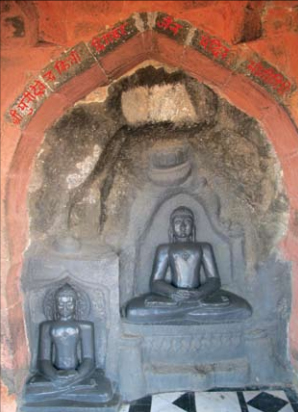
Figure 5 Two unidentified jinas in the 'Tapasvī Muni Devendrakīrti Mandira'
Alsdorf (1936: 86, 119) attributed the passages on Balarāma's life as a monk to an older, now lost version of the HP, which must have existed before the DigambaraŚvetāmbara split (p. 116f., see also Bruhn 1954: 90, 121), of which more in his view was preserved by the Śvetāmbaras, because many episodes, such as 2/3 of the incorporated Vasudevahiṇḍi and 'the legends of Baladeva's monastic life and visit [of Kṛṣṇa] in hell', are missing in the Digambara version of the HP, and must have been 'condensed or cut', while other sections were expanded. If it is true, however, that these episodes have been interpolated by Śvetāmbara authors in the medieval period, the image of Balabhadra turning his back cannot be older than the oldest known textual source, and at present must be placed in the 12th century or later.
The inverted image of Balabhadra is still venerated today, every morning, but does not feature prominently in Digambara and Śvetāmbara religious culture. In the academic literature only B. Jain (1987: 2012) offers a brief description of the image, without noting its uniqueness. General studies on Jaina iconography and of the iconography of Balarāma, such as Joshi (1979) and Vemsani (2006) seem to have altogether overlooked this rare, evocative image, hidden away in an inaccessible mountain aperture, more than 1300 meters above the sea.
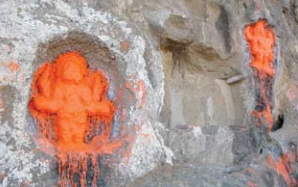
Figure 6. Protective deities at Mt. Māṅgī-Tuṅgī splashed with saffron colour.
All photographs are by Peter Flügel, December 2012.
References
Alsdorf, Ludwig. Harivaṃśapurāṇa. Ein Abschnitt aus der Apabhraṃśa-Welthistorie "Mahāpurāṇa Tisaṭṭhima hāpurisaguṇālaṃkāra" von Puṣpadanta. Als Beitrag zur Kenntnis des Apabhraṃśa und der Universalgeschichte der Jains herausgegeben. Alt- und Neu-Indische Studien Band 5. Hamburg: Friedrichsen, De Gruyter, 1936.
Bruhn, Klaus. Śīlānkas Cauppaṇṇamahāpurisacariya. Ein Beitrag zur Kenntnis der Jaina-Universalgeschichte. Alt- und Neu-Indische Studien Band 8. Hamburg: De Gruyter, 1954.
HP = Harivaṃśapurāṇa by Jinasena Punnāṭa. 783 C.E. Hindī Anuvāda, Prastāvanā tathā Pariśiṣṭa sahita. Sampādana evaṃ Anuvāda: Pannālāl Jain. Mūrtidevī Granthamālā, Saṃskṛt Gramthāṃkara 27. Naī Dillī: Bhāratīya Jñānapīṭha, 1962 / 2003.
Jacobi, Hermann. Ausgewählte Erzählungen in Mahârâshṭrî: Zur Einführung in das Studium des Prâkrit. Leipzig: Verlag von S. Hirzel, 1886a.
Jacobi, Hermann. 'Die Jainalegende von dem Untergang Dvâravatî's und von dem Tode Kṛishṇas. ' Zeitschrift der Deutschen Morgenländischen Gesellschaft 42 (1888) 493-529.
Jain, Balabhadra. 'Māṅgītuṅgī.' Bhārata ke Digambara Jaina Tīrtha. Caturtha Bhāg. Bambaī: Bhāratvarṣīya Digambara Jaina Tīrthakṣetra Kameṭī, 1987, pp. 208216.
Jain, Gaṇeślāl Nāthūlāl. Śrī Māṅgītuṅgī Digambara Jaina Siddhakṣetra: Paricay va Pūjā. Tṛtīya Saṃskaraṇa. Indaur: Puṣparaṅga Printers, n.d.
Jain, Pravīṇcandra & Darabārolāl Koṭhiyā (Sampādaka). Jaina Purāṇa-Kośa. Mahāvīrjī: Jainavidyā Saṃsthān, 1993.
Jaini, Padmanabh S. 'Jaina Purāṇas: A Purāṇic Counter.' Purāṇa Perennis: Reciprocity and Transformation in Hindu and Jaina Texts. Edited by Wendy Doniger, 207250. Albany: State University of New York Press, 1993.
Joshi, Nilakanth Purushottam. Iconography of Balarāma. New Delhi: Abhinav Publications, 1979.
Mehta, Mohan Lal & K. Rishabh Chandra. Prakrit Proper Names. Vol. I-II. Ahmedabad: L.D. Institute, 1970-1972.
TŚPC = Triṣaṣṭiśalākāpuruṣacaritra by Hemacandra. Translated by Helen M. Johnson as The Lives of SixtyThree Illustrious Persons (6 Vols.). Baroda: Oriental Institute, 1931-1962.
UP = Uttarapurāṇa by Ācārya Guṇabhadra. 897 C.E. Hindī Anuvāda Tathā Pariśiṣṭa Ādi Sahita. SampādanaĀnuvāda: Pannālāl Jain. Nayī Dillī: Bhāratīya Jñānapīṭha, 1954 / 2003.
UttVṛ = Uttarādhyayanavṛtti by Devendragaṇi (Devasri, Nemicandrasūri). 1072/3 or 1122/3 C.E. Extracts and translations in Jacobi 1886, 1888.
Vemsani, Lavanya. Hindu and Jain Mythology of Balarāma: Change and Continuity in an Early Indian Cult. Lewiston: The Edwin Mellen Press, 2006.
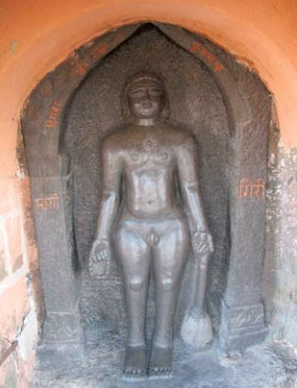
Image of Kṛtāntavakra
Even the standard biography of Varddhamāna 'Mahāvīra', which appears to be the only exception, is 'largely legendary' (Bruhn 1954: 115-7).
The first of the two samādhis is in a dilapidated condition and unattributable. Next to the samādhi for Balabhadra a samādhi for Rāmacandra is said to have stood, according to a local leaflet.
For a rudimentary site-description with an extensive historical introduction, see B. Jain (1987: 212-4). For photos, descriptions, and site maps, see Titze (1998: 82-6).
On Muni Kṛtāntavakra, the 'Bended End of Deeds'(cf. Rāma's chief general, and the Hindu god of death Kṛtānta), see Raviṣeṇa's Padmapurāṇa 118 (Jain & Koṭhiyā 1993: 95).
Because the Jina images are not well executed and apparently do not feature a śrīvatsa symbol on the chest (which is not the case), B. Jain (1987: 213) estimates that they are very old and may have been created at the end of the Gupta empire, certainly not later than the 7th 8th century. The web-page of Māṅgī-Tuṅgī (http://www.jainteerth. com/teerth/mangitungi.asp) offers the following historical information, based on the Hindī original of G.N. Jain (n.d.: 9f.): 'Inscriptions on so many idols are not clear. Many idols installed in V.S. 651 are here. Many inscriptions on rock are here in Sanskrit Language in the ADINATH & SHANTINATH Caves, but not clear. An inscription of V. S. 1400 is still there in the Adinath Cave. Mulher's Rathor King Viramdeo's name is written in many inscriptions, He ruled 400 years ago. King Viramdeo whenever went for war, he used to salute Devi Chakreshvari.'
The same explanation, evidently based on Śvetāmbara purāṇa texts, is given in the statement in modern Hindī placed next to the image of Balabhadra by Rameś Rāmpūra. (See Figure 4.) B. Jain (1987: 212) cites a different rationale, with reference to a circulating "interesting story", which is more in tune with the Balabhadra story in the Digambara purāṇas. It tells us that the statue depicts the moment Balabhadra turns his back to the world after the cremation of his brother Kṛṣṇa.
annayā Baladevo vi māsa-pāraṇae bhikkh'aṭṭhā egammi nagare pavisanto egāe taruṇīe kūva-taḍa-ṭṭhiyāe kūva-jalaṃ kaḍdhiu-kāmāe diṭṭhi-goyaraṃ gao. tao tīe Baladeva-rūvā'isay-akkhitta-hiyayāe tag-gaya-cittattaṇao kuṇḍaya-kaṇṭha-bhantīe niya-kaḍiyal'uttāriyaputtassa kaṇṭhe pāso dinno. tao oyāriyo kūve. evaṃ ca Baladeveṇa diṭṭhaṃ. tao saṃvegam-uvagāo: aho me deho vi aṇaṭṭha-heū pāṇiṇaṃ! [ti cintiyaṃ. taṃ ca bālayaṃ aṇukampāe moyā-veūṇa.] tā saṃpayaṃ jai tattha-ṭṭhio itthiyāhiṃ adissamāno bhikkhaṃ labhissāmi, tāhe geṇhissaṃ, nā annahā. evam-abhiggaha geṇhiya tao ceva niyattiyaṃ. taṃ ceva vaṇaṃ gao (UttVṛ,, in Jacobi 1888: 506f.).
 Dr. Peter Flügel
Dr. Peter Flügel